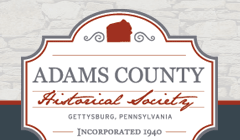Document Type
Article
Abstract
By 3 July 1863, Union troops under the command of General George G. Meade and elements of General Robert E. Lee's Confederate army had struggled for two days over the rolling farm lands, ridges, and rocky crags around a small farming community and county seat known as Gettysburg, Pennsylvania. Within the encompassing whirlpool ofbattle, however, smaller dramas had unfolded, and one of them is of interest to us here. The soldiers had been fighting for the possession of a house and barn situated equidistant between the battle lines about one and onequarter miles south-southwest of the town square. During a thirty-one hour period, the farmstead had changed hands ten times, but by midmorning of the third day, Federal troops along Cemetery Ridge could no longer tolerate the harassing sharpshooters' fire originating from the barn. After men of the 14th Connecticut Regiment recaptured the farmstead, a courier was sent out to the besieged "Nutmeggers" with orders to torch the buildings and withdraw. Shortly before the noon, the farmstead was engulfed in flames. Later, a two-hour cannonade was followed by a massed Confederate infantry assault on the Union center, the famous "Pickett's Charge." Men in butternut-and-grey again traversed the same farmstead, but by that time the earlier actions there had become anticlimactic. By 5 July the armies had withdrawn, but they had left behind a devastated landscape.
However, more was destroyed the morning of the third than a refuge for the skirmishers and sharpshooters: a secure family setting and livelihood were also consumed in the fires. The lives of the farmer, William Bliss, his wife Adeline, and their daughters Sarah and Frances had been immeasurably altered. But there is one major difference between the Bliss's situation and that of other noncombatants: during Lee's Gettysburg campaign, William and his family were the only civilians to lose everything except the clothes on their backs and that which was most dear to them-their lives. [excerpt]
Recommended Citation
Christ, Elwood W.
(1996)
"William and Isabel: Parallels Between the Life and Times of the William Bliss Family, Transplanted New Englanders at Gettysburg, and a Nineteenth-Century Novel, 'Isabel Carollton: A Personal Retrospect' by Kneller Glen,"
Adams County History: Vol. 2, Article 5.
Available at:
https://cupola.gettysburg.edu/ach/vol2/iss1/5
Included in
Cultural History Commons, Military History Commons, Social History Commons, United States History Commons
